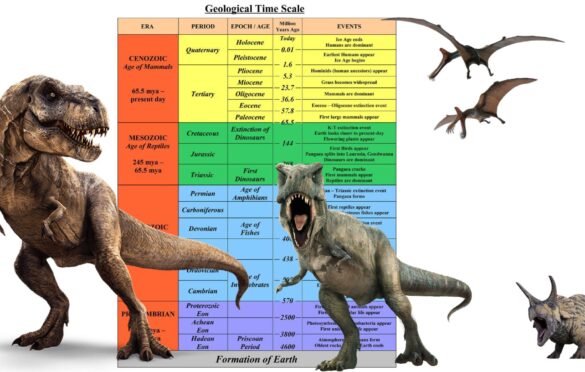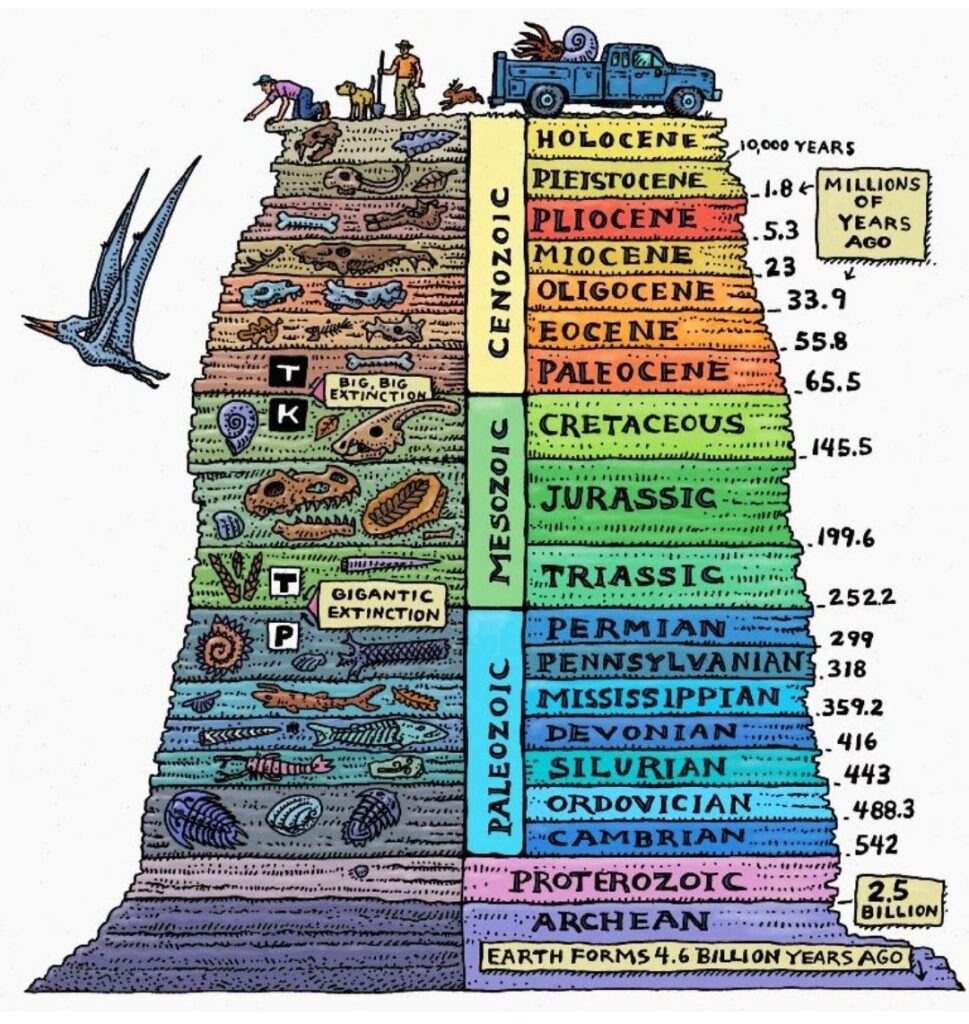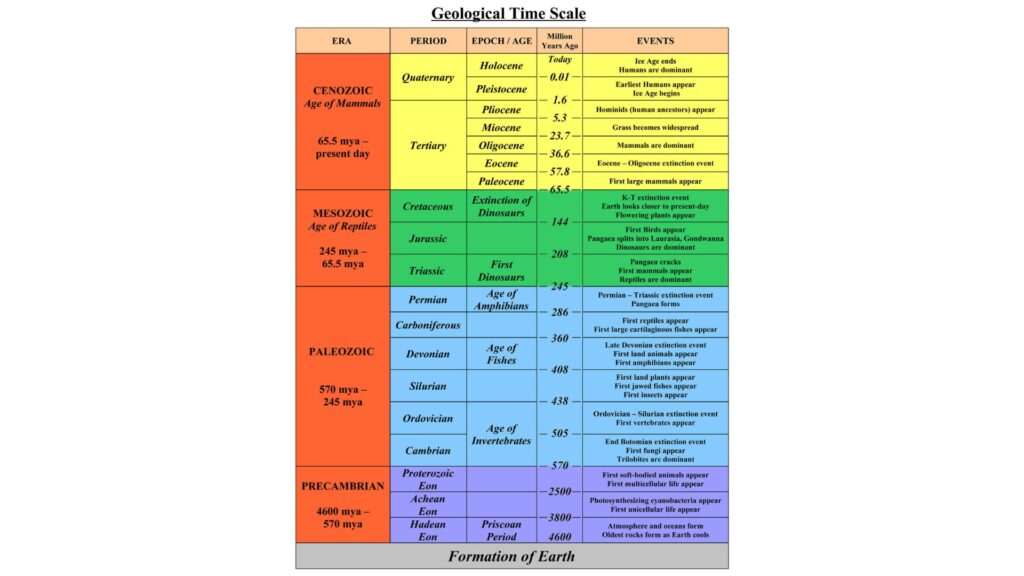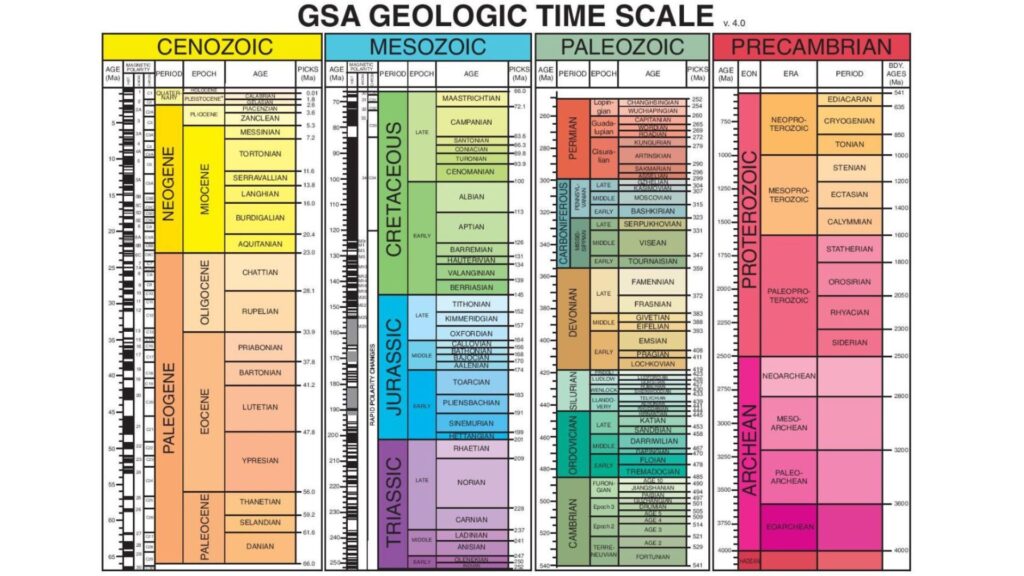What is the geologic time scale? lesson review answers

Introduction
What is the geologic time scale? lesson review answers – The Geologic Time Scale (GTS) is a fundamental tool used by geologists and earth scientists to understand the history and evolution of our planet. It provides a chronological framework that organizes Earth’s geological history into manageable segments, allowing us to comprehend the vast expanse of time over which our planet has existed. In this article, we will delve into the intricacies of the Geologic Time Scale, answering essential questions and providing verified information to aid students and anyone interested in this fascinating topic.
What is the geologic time scale? lesson review answers

What is the Geologic Time Scale? lesson review answers
The Geologic Time Scale is a system that categorizes and measures geological time into various intervals. It enables scientists to date and relate the events that have shaped Earth’s surface and life forms over billions of years. By dividing time into distinct units, geologists can better comprehend the sequence of events and make comparisons between different geological phenomena.
Why do we need the Geologic Time Scale?
The Geologic Time Scale is essential because of the vast timescales involved in Earth’s history. It spans over 4.5 billion years, from the planet’s formation to the present day. Such immense time spans can be difficult to grasp, and the GTS provides a coherent and structured way to understand and study this history.
How is the Geologic Time Scale structured?
The GTS is organized hierarchically, with larger units subdivided into smaller ones. The major divisions are eons, eras, periods, epochs, and ages. These divisions are based on significant events, such as mass extinctions, the appearance of new life forms, or major geological changes.
Learning the Eons, Eras, and Periods
The largest divisions of the Geologic Time Scale are eons, which represent billions of years, eras, which cover hundreds of millions of years, and periods, which encompass tens of millions of years. To facilitate learning, here’s a breakdown of the major eons, eras, and periods:
Hadean Eon: This eon started with the formation of Earth about 4.5 billion years ago and lasted until roughly 4 billion years ago. It was characterized by the formation of the early atmosphere and oceans.
Archean Eon: Following the Hadean Eon, the Archean Eon spanned from approximately 4 billion years ago to 2.5 billion years ago. During this time, life began to emerge, and the first continents started to form.
Proterozoic Eon: Lasting from 2.5 billion years ago to around 541 million years ago, the Proterozoic Eon witnessed significant changes in Earth’s atmosphere and the appearance of eukaryotic cells.
Phanerozoic Eon: The Phanerozoic Eon is the current eon, starting around 541 million years ago and continuing to the present day. It is further divided into three eras: the Paleozoic, the Mesozoic, and the Cenozoic.
Paleozoic Era: This era lasted from around 541 million years ago to 252 million years ago. It saw the emergence of complex multicellular life, including early fish, amphibians, and reptiles.
Mesozoic Era: Spanning from 252 million years ago to approximately 66 million years ago, the Mesozoic Era is often referred to as the “Age of Dinosaurs.” It was a time of great reptilian diversity.
Cenozoic Era: The Cenozoic Era began around 66 million years ago and continues to the present day. It is characterized by the rise of mammals, birds, and the appearance of humans.

Understanding Periods and Epochs
Within the eras, the Geologic Time Scale is further divided into periods and epochs. These divisions are defined by specific geological events, such as major extinctions or the appearance of new species. Some well-known periods and epochs include:
Cambrian Period: This period, occurring from approximately 541 million years ago to 485 million years ago, was crucial in the development of complex marine life, including trilobites.
Jurassic Period: The Jurassic Period, from about 201 million years ago to 145 million years ago, was dominated by the giants of the dinosaur world, including the infamous Tyrannosaurus rex.
Holocene Epoch: The Holocene Epoch marks the most recent 11,700 years, characterized by the growth of human civilizations and significant climatic changes.
The Geologic Time Scale in Practice: Examples and Case Studies
The K-T Boundary and the Extinction of Dinosaurs
The Cretaceous-Paleogene (K-T) boundary, approximately 66 million years ago, marks one of the most famous events in the Geologic Time Scale – the mass extinction of dinosaurs. The K-T boundary separates the Cretaceous Period from the Paleogene Period and is identified by a layer of sediment enriched in the element iridium, believed to have been deposited by a massive asteroid impact.
The Great Oxygenation Event and the Proterozoic Eon
Around 2.4 billion years ago, during the Proterozoic Eon, the Great Oxygenation Event occurred. This event saw a significant increase in atmospheric oxygen due to the emergence of oxygen-producing cyanobacteria. This rise in oxygen levels paved the way for the evolution of complex, oxygen-dependent life forms.

Conclusion
The Geologic Time Scale is a crucial tool for understanding the history of our planet. By breaking down Earth’s immense history into manageable units, it allows scientists to comprehend the timeline of geological events and the evolution of life. From the formation of Earth during the Hadean Eon to the emergence of Homo sapiens in the Cenozoic Era, the GTS provides a fascinating narrative of our planet’s journey through time.
By exploring the major divisions of the Geologic Time Scale, such as eons, eras, periods, and epochs, students can gain a deeper appreciation for the Earth’s rich geological history. The K-T boundary extinction event and the Great Oxygenation Event are just two examples of the many significant events that have shaped the course of evolution over billions of years.
In conclusion, the study of the Geologic Time Scale not only provides insights into the past but also helps us anticipate and prepare for the future. By understanding the long-term geological processes that have shaped Earth, we can make informed decisions to ensure the preservation of our planet for generations to come. Embracing the vastness and complexity of the Geologic Time Scale inspires awe and a sense of responsibility towards our unique and precious world.
